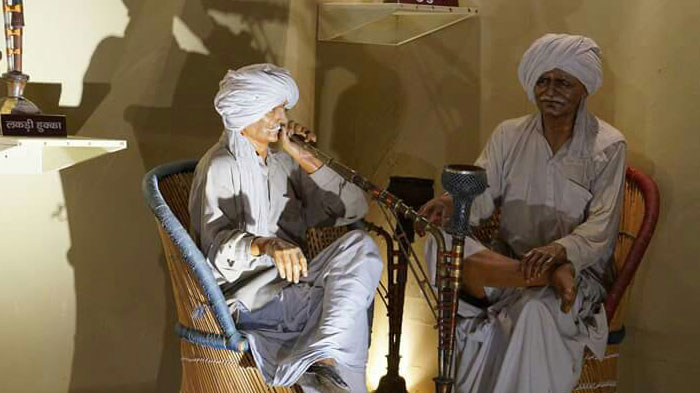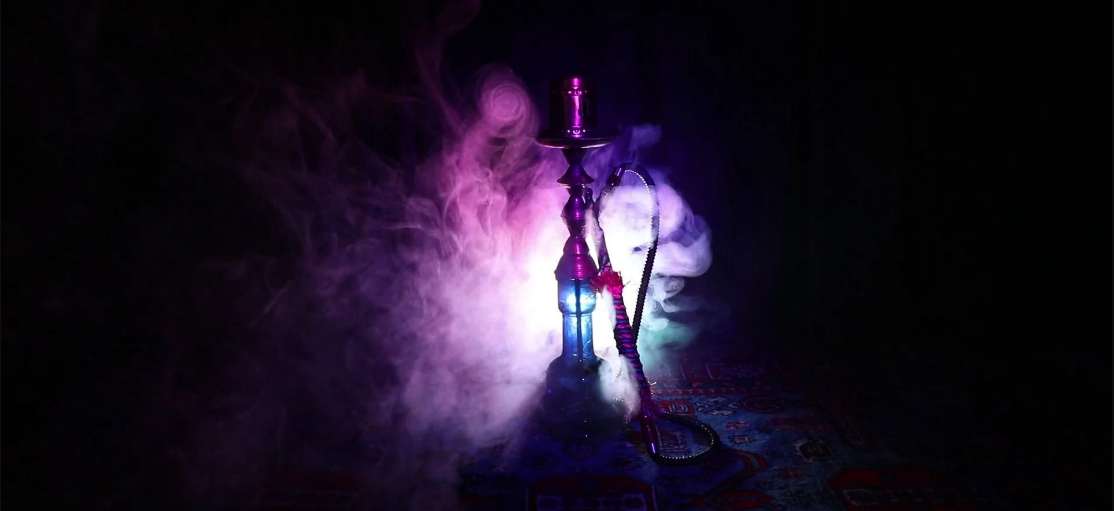Traditional Hookah and Modern Hookah: What’s the Difference
You probably already know that hookah pipes come in a variety of shapes and sizes. However, there are 2 main categories for all hookahs: traditional hookah pipes and modern hookah pipes. Most people new to hookah smoke wonder which type of hookah is better, but traditional hookah (also called classic hookah) and modern hookah have their pros and cons. Let's take a closer look at the two types so that you can decide which hookah pipe is best for you.
Traditional Hookah
As the name suggests, the traditional hookah pipe is the oldest (conventional) smoked hookah, and its various designs follow cultural origins and approaches to specific materials. Traditional hookah pipes can be classified by the country or region in which the design originated (though not necessarily depending on the country in which the pipe was manufactured). The main pipes are the Egyptian Hookah Pipe, Syrian argileh, and Turkish nargileh.

Egyptian Hookah Pipe
Since Egyptian hookah is the most common type of traditional hookah pipe, you may have met several times at hookah lounges, hookah shops, or at friends' houses. The open draw is the standard by which all other hookah pipes are measured and is synonymous with the high-quality Egyptian Shisha pipe. Egyptian hookah comes with a coiled metal hose woven from a leather exterior, hand-painted glass, or ceramic vase. Metal parts such as stems are typically made of brass or copper and are prone to rusting and cracking in welded seams.
Syria Argileh
Proper Syrian argileh is very rare today and can easily be mistaken for an Egyptian Shisha pipe. The main difference is that Syrian hookah pipes are primarily built to accommodate "male" hookah bowls (the bowl is located inside the stem) whereas Egyptian hookah pipes are designed to accommodate the more common "female" hookah bowls (the bowl is inside the stem). It requires more frequent cleaning, but the downside is that the draw is more limited, which creates a more intense flavor in the smoke. Syrian hookah pipes are more likely to feature a cast brass vase (as opposed to glass or ceramic) with carved sequins on the outside of the brass.
Turkish Nargileh
The Turkish Nargileh is a "no-frills" variety of traditional hookah pipes, with fewer individual components and less decoration and carving than other classic hookah designs. Turkish hookah pipes are also designed to fit "male" hookah bowls like the Syrian Argileh, but they are tighter because they don't have a breath/purge valve.
Advantages of traditional hookah pipe
Disadvantages of traditional hookah pipes
Modern Hookah Pipe
Modern hookah pipe designs use modern materials and manufacturing techniques to produce a product that is at least in most respects superior. Compared to traditional hookah pipes modern hookah pipes are not as authentic as they look, to suit the needs of every hookah smoker, modern hookah pipes come in all shapes and sizes. There are small tabletop modern hookah kits for more enjoyable smoking sessions and large standalone modern hookah kits. In terms of smoking feel, modern hookahs are most similar to Egyptian hookah pipes, but with much better stability. The culmination of improved parts and designs usually produces cooler, smoother draws. We are talking about marine-grade stainless steel parts and improved seals and joints, silicone hoses, breather/purge valves, downstem diffusers. This is why modern hookah pipes typically cost more than traditional hookah pipes, but with modern hookah pipes, ongoing maintenance costs are much lower.

Advantages of modern hookah pipes
Disadvantages of modern hookah pipes
Conclusion
We love and use all types of hookah, but both modern hookahs and traditional hookah pipes have different uses. If you go out to your partner's house or hookah bar, you can smoke a traditional hookah pipe (if well maintained). However, for home use, it is easier to choose a modern hookah pipe due to its reliability, durability, and ease of use.
Traditional Hookah
As the name suggests, the traditional hookah pipe is the oldest (conventional) smoked hookah, and its various designs follow cultural origins and approaches to specific materials. Traditional hookah pipes can be classified by the country or region in which the design originated (though not necessarily depending on the country in which the pipe was manufactured). The main pipes are the Egyptian Hookah Pipe, Syrian argileh, and Turkish nargileh.

Egyptian Hookah Pipe
Since Egyptian hookah is the most common type of traditional hookah pipe, you may have met several times at hookah lounges, hookah shops, or at friends' houses. The open draw is the standard by which all other hookah pipes are measured and is synonymous with the high-quality Egyptian Shisha pipe. Egyptian hookah comes with a coiled metal hose woven from a leather exterior, hand-painted glass, or ceramic vase. Metal parts such as stems are typically made of brass or copper and are prone to rusting and cracking in welded seams.
Syria Argileh
Proper Syrian argileh is very rare today and can easily be mistaken for an Egyptian Shisha pipe. The main difference is that Syrian hookah pipes are primarily built to accommodate "male" hookah bowls (the bowl is located inside the stem) whereas Egyptian hookah pipes are designed to accommodate the more common "female" hookah bowls (the bowl is inside the stem). It requires more frequent cleaning, but the downside is that the draw is more limited, which creates a more intense flavor in the smoke. Syrian hookah pipes are more likely to feature a cast brass vase (as opposed to glass or ceramic) with carved sequins on the outside of the brass.
Turkish Nargileh
The Turkish Nargileh is a "no-frills" variety of traditional hookah pipes, with fewer individual components and less decoration and carving than other classic hookah designs. Turkish hookah pipes are also designed to fit "male" hookah bowls like the Syrian Argileh, but they are tighter because they don't have a breath/purge valve.
Advantages of traditional hookah pipe
- Best Looking
- Unique design
- Open, restricted, or closed drawing options
- Usually cheaper than modern hookah pipes.
Disadvantages of traditional hookah pipes
- Air ceiling
- Durability
- They are harder to clean than modern hookah pipes.
- Compatibility
Modern Hookah Pipe
Modern hookah pipe designs use modern materials and manufacturing techniques to produce a product that is at least in most respects superior. Compared to traditional hookah pipes modern hookah pipes are not as authentic as they look, to suit the needs of every hookah smoker, modern hookah pipes come in all shapes and sizes. There are small tabletop modern hookah kits for more enjoyable smoking sessions and large standalone modern hookah kits. In terms of smoking feel, modern hookahs are most similar to Egyptian hookah pipes, but with much better stability. The culmination of improved parts and designs usually produces cooler, smoother draws. We are talking about marine-grade stainless steel parts and improved seals and joints, silicone hoses, breather/purge valves, downstem diffusers. This is why modern hookah pipes typically cost more than traditional hookah pipes, but with modern hookah pipes, ongoing maintenance costs are much lower.

Advantages of modern hookah pipes
- Unlimited designs
- Air ceiling
- Durability
- Easy to clean
- Not a classic look
- More expensive in the beginning
- Open-only draw
Conclusion
We love and use all types of hookah, but both modern hookahs and traditional hookah pipes have different uses. If you go out to your partner's house or hookah bar, you can smoke a traditional hookah pipe (if well maintained). However, for home use, it is easier to choose a modern hookah pipe due to its reliability, durability, and ease of use.



Comments
Post a Comment